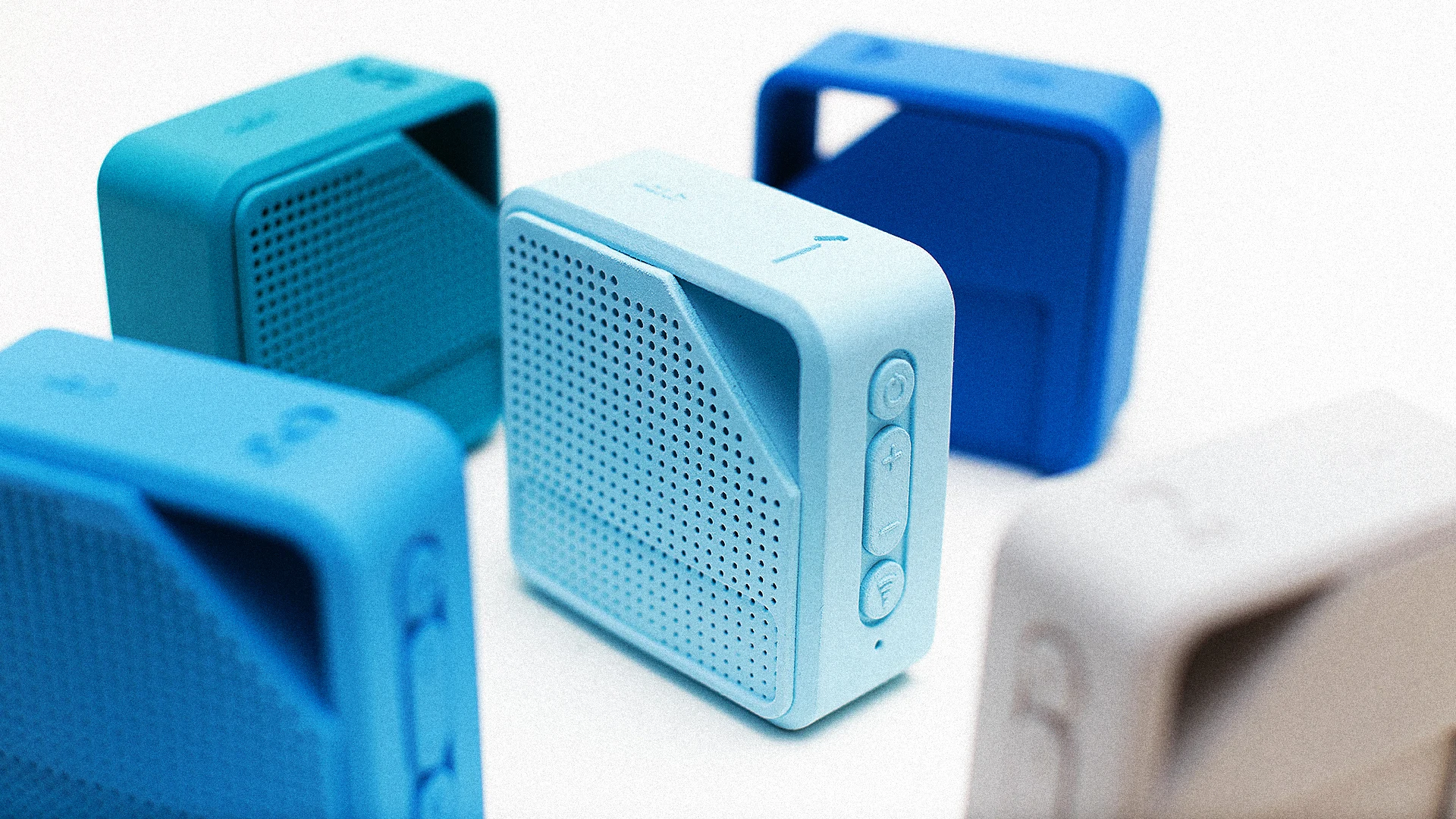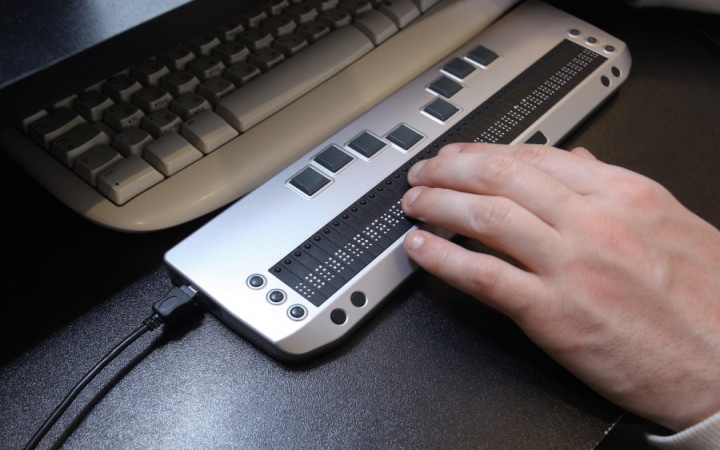Lightweight Technology for Low Vision: A Revolution in Accessibility
Lightweight Technology for Low Vision: A Revolution in Accessibility
Blog Article
Discover Ingenious Devices Created for the Visually Impaired
The growth of ingenious devices for the aesthetically damaged stands for a considerable development in ease of access and self-reliance. Technologies such as wise glasses with AI capabilities and mobile applications created to supply auditory descriptions are reshaping daily experiences for individuals.
Smart Glasses for Navigating

Smart glasses developed for navigating are revolutionizing the method visually impaired people communicate with their environment. These innovative tools use a combination of electronic camera technology, artificial intelligence, and acoustic feedback to provide real-time information concerning environments. By using obstacle discovery systems, smart glasses can inform customers to potential dangers, making it possible for more secure flexibility in both unknown and familiar setups.
The combination of GPS innovation additionally enhances navigation abilities, permitting customers to receive acoustic instructions as they move. This hands-free approach not just fosters independence but also empowers visually damaged people to browse city landscapes with enhanced confidence. Furthermore, lots of wise glasses are geared up with features that determine spots and street indications, supplying contextual info that improves the customer experience.
Furthermore, the advancement of these devices is consistently advancing, with companies working to enhance the accuracy of object recognition and increase the series of navigational features. As smart glasses come to be a lot more obtainable and budget friendly, they hold the possible to considerably transform every day life for visually damaged users. Eventually, these innovative tools stand for an important step towards inclusivity, offering enhanced movement and a higher sense of freedom for individuals browsing the world around them.

Mobile Apps for Daily Living
Just how can mobile applications boost the day-to-days live of aesthetically damaged people? Mobile applications are changing the way visually damaged users navigate their atmospheres, handle daily jobs, and gain access to details. These applications give crucial support via various performances, fostering independence and enhancing quality of life.
A number of cutting-edge mobile apps are designed specifically for everyday living. For instance, apps like Be My Eyes connect visually damaged users with sighted volunteers via video clip telephone calls, permitting them to receive real-time help with jobs such as checking out tags or navigating unknown spaces. In A Similar Way, Seeing AI, developed by Microsoft, utilizes expert system to explain environments, read message, and determine things, properly changing a smart device right into a powerful tool for everyday assistance.
Furthermore, navigating applications tailored for the visually impaired, such as Aira and BlindSquare, supply audio-based instructions and ecological info, enabling users to traverse their environments securely and confidently. Beyond navigating and prompt help, mobile apps also support company and task administration, with functions that aid users establish tips, develop order of business, and track consultations. In recap, mobile applications act as essential resources, empowering aesthetically impaired people to lead more independent and fulfilling lives.
Wearable Technologies for Aid
Empowerment through modern technology is increasingly apparent in the realm of wearable gadgets designed to help visually impaired people. These innovative devices integrate effortlessly into everyday life, enhancing navigation and supplying necessary responses to customers. For circumstances, wise glasses geared up with cameras can acknowledge faces and review text out loud, allowing users to communicate more with confidence in expert and social settings.
One more significant advancement is making use of haptic comments systems in wearable devices. These systems make use of vibrations or various other responsive signals to share details about the individual's environment, such as challenges or next page changes in terrain, improving mobility and safety and security. Wearable technologies additionally include wristbands that attach to smartphones, informing users to notices through subtle vibrations, thus boosting connection without reliance on visual hints.
As these innovations remain to advance, they are not just enhancing self-reliance for visually impaired people however likewise fostering a greater feeling of addition in culture. By bridging the space between difficulties faced in day-to-day living and the capacity for autonomy, find this wearable innovations work as pivotal devices in the pursuit for equality and empowerment for those with visual problems.
Audio Description Tools
Audio summary tools play an essential duty in boosting accessibility for visually impaired individuals, offering them with the capability to engage with aesthetic media. Assistive technology for the blind. These tools provide narrated summaries of crucial aesthetic components in movies, television programs, and live performances, making sure that users can completely comprehend the context and emotions communicated through visuals
Sound description can be integrated right into different platforms, including streaming solutions, movie theater screenings, and live theater. Numerous prominent streaming solutions currently consist of audio description as an ease of access feature, allowing audiences to pick it quickly. Along with mainstream media, specialized apps likewise exist, supplying audio descriptions for art events, museums, and various other social occasions.
The efficiency of audio summary pivots on the ability of the narrators, that need to convey aesthetic information succinctly without detracting from the original sound. Advancements in this area are also leading the way cheap blue light glasses for even more personalized experiences, where customers can change the level of detail and pacing according to their choices.
Braille Innovations and Instruments
Braille tools and innovations have dramatically changed the means visually impaired individuals connect with text and details. Modern developments have actually led to the advancement of functional devices that improve proficiency and freedom among individuals.
Moreover, mobile Braille notetakers incorporate traditional Braille input with modern functionalities, promoting note-taking, organizing, and paper editing on the move. Braille displays and notetakers. These compact gadgets often include text-to-speech abilities, bridging the void in between Braille and auditory details
Additionally, ingenious Braille printers have actually arised, allowing users to create Braille labels, files, and instructional products efficiently. This availability promotes higher engagement in instructional and specialist environments, ultimately promoting inclusivity.
Moreover, study right into wise Braille innovations remains to broaden. Instruments that incorporate artificial knowledge are being discovered to supply real-time navigating assistance and contextual details, enhancing the user experience in diverse settings. Overall, these innovations reflect a dedication to equipping aesthetically damaged individuals through technology, ensuring they can quickly accessibility and involve with the world around them.

Conclusion
The development of cutting-edge devices for the aesthetically impaired considerably enhances self-reliance and top quality of life. Smart glasses, mobile applications, wearable modern technologies, audio description devices, and Braille innovations jointly empower people by supplying crucial navigating support, ecological awareness, and boosted reading experiences. These innovations not only foster higher inclusion but also advertise freedom in everyday activities, ultimately adding to a more accessible and equitable society for visually impaired people. Continued development in this field holds pledge for more improvements.
As smart glasses end up being more available and economical, they hold the prospective to significantly change everyday life for visually damaged customers. Mobile apps are changing the method visually impaired customers navigate their settings, take care of daily tasks, and accessibility information. Apps like Be My Eyes connect visually impaired customers with sighted volunteers through video phone calls, allowing them to get real-time aid with tasks such as checking out labels or browsing unknown spaces.In addition, navigating apps tailored for the visually impaired, such as Aira and BlindSquare, provide audio-based instructions and ecological information, enabling individuals to traverse their environments safely and confidently.The improvement of cutting-edge tools for the visually damaged dramatically boosts freedom and quality of life.
Report this page